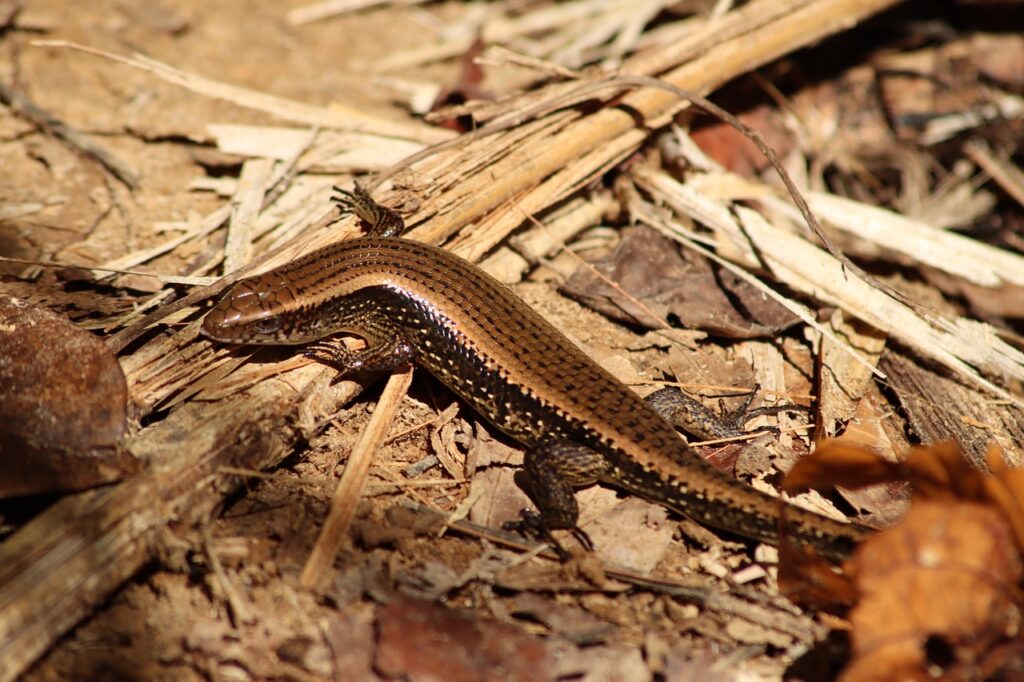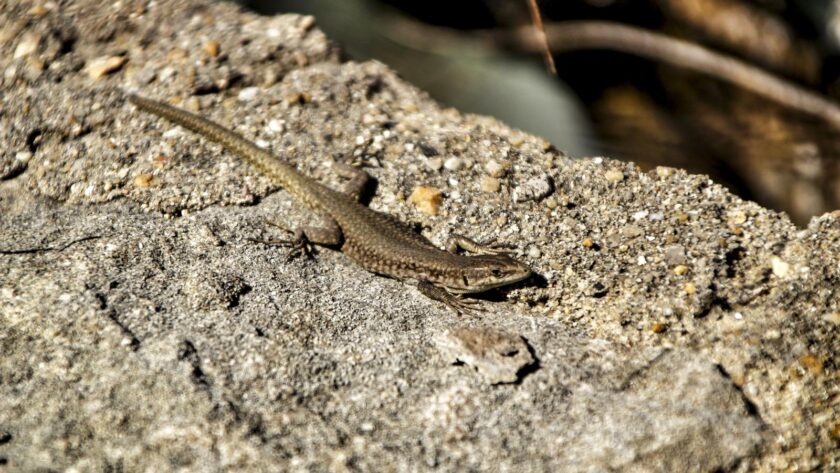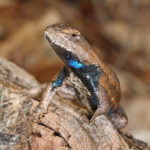Are you curious about whether or not brown lizards are poisonous? You’re not alone!
It’s a common myth that brown lizards are venomous, but the truth is far more complex.
In this article, we’ll explore the facts and myths surrounding the toxicity of brown lizards. We’ll look at different environments and potential evolutionary advantages for these animals to help us understand their behavior better.
By doing so, we can gain insight into how other types of lizards may be toxic too.
Get ready to dive into the science of brown lizard toxicity and answer your question: Are Brown Lizards Poisonous? – you won’t want to miss it!
Table of Contents
Overview of Lizards

You may be familiar with lizards, but there’s a lot more to learn about these fascinating creatures!
Lizards are found on all continents except Antarctica, and their habitat diversity ranges from forests and deserts to marshes and meadows.
Different species have adapted to live in trees, underground, or even in water.
They possess an impressive array of behaviors that help them evade predators and survive in the wild, such as digging burrows for shelter or changing color to blend into their surroundings.
Many lizards also have specialized diets, including plants, insects, small mammals, fish, frogs, and eggs.
These special adaptations are what make lizards so interesting—and why they’ve been able to thrive for millions of years!
The Claim: Are Brown Lizards Poisonous?
Asking if ‘brown lizards‘ are toxic is an age-old question that you’ve probably heard before. While the truth is not as straightforward as a simple yes or no answer, it does appear that certain species of brown lizards can pack a dangerous punch with their venom:
- Some species of brown lizards have venomous bites that can cause serious symptoms in humans, such as swelling and blistering.
- Brown lizard venom contains proteins and peptides which are used by the animal for self-defense against predators.
- The type and amount of toxins in any given species will vary depending on its habitat and dietary habits.
- Although it’s rare for these creatures to bite humans intentionally, they may do so out of fear when provoked.
- It’s important to remember that not all brown lizards are poisonous; some lack the ability to produce or secrete this type of toxin altogether.
In general, it’s best to take caution around any wild animal—lizard or otherwise—and avoid contact with them unless necessary. If you come across a brown lizard outdoors, observe from a safe distance until it moves away naturally or through gentle encouragement like clapping your hands or making loud noises.
Examining the Evidence
Despite what you may think, there’s evidence that certain species of lizards can be venomous, making it important to take caution around them.
While most species of brown lizards are harmless, some have developed a carnivorous diet and other chemical defenses to protect themselves from predators. For example, the Texas Horned Lizard has sharp spines on its body which contain venom-filled glands that can be used as a defense mechanism when threatened. Similarly, the Gila Monster lizard found in North America produces a toxin from two poison glands located in its lower jaw which can cause serious pain if bitten.
Thus, although most brown lizards do not pose any danger to humans, it’s still important to educate yourself about their behavior and habitat before coming into contact with them.
Impact of Different Environments
The environment in which lizards live can have a significant impact on their behavior and even if they’re venomous or not, so it’s important to be aware of your surroundings! Lizards are able to adapt to changing climates, but their ability to survive and thrive in different habitats can depend on the diversity available.
When looking at whether brown lizards are poisonous or not, their habitat is an important factor. Here are three key points:
- Habitat diversity plays an important role in determining how well lizards will adapt and survive in different environments.
- Climate adaptation is essential for brown lizards who wish to remain healthy and thrive.
- If the habitat doesn’t provide enough resources or the climate isn’t suitable, then a lizard’s health may suffer as a result – potentially making them more prone to becoming venomous.
Ultimately, when considering whether brown lizards are poisonous or not, it’s essential to take into account the environment they live in. Different habitats could significantly alter their behaviors and make them either more or less likely to become poisonous depending on the conditions they face.
Potential Evolutionary Advantages
Have you ever wondered what evolutionary advantages brown lizards might have gained from being poisonous?
Adaptive traits such as the ability to produce toxins can be beneficial for survival in certain environments. This is especially true for brown lizards, which are often found in areas with a high concentration of predators. By having the ability to produce toxins, these lizards can use them as defensive strategies against potential threats. This helps them survive and reproduce more successfully than their non-poisonous counterparts.
In addition to providing protection from predators, being poisonous may also give brown lizards an advantage when competing for resources with other species.
For example, if two species of lizard are competing for food or shelter in the same area, the one that is able to produce toxins may be better equipped to win out over its competition due to its increased defensive capabilities. Ultimately, this could lead to greater success in terms of population growth and survival rates among those species that possess this adaptive trait.
Other Types of Poisonous Lizards
While brown lizards are some of the most common types of poisonous reptiles, there are plenty of other species that can pack a toxic punch.
It might surprise you to learn that not all venomous species have the same kind of poison, and they don’t all look brown either!
Many of these species come in a variety of colors, shapes, and sizes.
Even though their appearance is different from one another, they still possess deadly venom which can cause serious harm to humans if ingested or injected.
One type of lizard with more potent venom than others is Gila monsters.
These brightly colored lizards are found mainly in North America and Mexico and typically have a black-and-orange pattern on their skin.
They also vary in diet when compared to other types of poisonous reptiles; instead of eating insects like other lizards do, Gila monsters feed mostly on small mammals or eggs.
The venom contained within their saliva is incredibly strong and can be lethal if it enters the bloodstream directly through an open wound or bite mark.
Final Thoughts
Now that we’ve explored different types of poisonous lizards, let’s take a look at some final thoughts. You may have come away with a better understanding of the potential for certain lizards to be toxic and dangerous when encountered.
It’s important to remember that communication behaviors such as hissing, puffing up, and tail-flicking are all natural predator avoidance mechanisms for these animals.
That being said, it’s always wise to use caution when approaching any type of wild animal, including lizards. If you feel threatened or uncomfortable in any situation involving wildlife, it’s best to back away slowly and give the animal plenty of space.
Understanding how different kinds of lizards communicate can help you stay safe while enjoying nature!
Frequently Asked Questions
What other colors of lizards are poisonous?
Did you know that lizards come in a variety of colors and patterns, from bright green to brown to purple?
Some of these colors can indicate whether or not a lizard is poisonous. Of the many different species of lizards across the world, about 200 are known to be venomous, with habitats ranging from tropical rainforests to deserts.
While some color patterns are unique for certain species, others may depend on the environment they live in – and some even change color over time!
Venom effects vary depending on the type of lizard and how much venom has been injected into its victim. So if you’re looking for an interesting fact about lizards, it’s worth noting that their vibrant colors can often indicate whether or not they’re poisonous!
How can I tell if a lizard is poisonous?
Identifying a poisonous lizard may be easier than you think. The first step is to look for specific identifying features of venomous traits. These include bright colors, such as red, yellow or orange; a triangular-shaped head; and vertical pupils in their eyes.
You should also look for the presence of an exposed external gland which releases toxins when threatened. Lastly, if you manage to get close enough to the lizard, pay attention to its smell – some venomous lizards have a distinct odor.
By taking all these factors into consideration and being mindful of your surroundings, you can easily determine whether or not the lizard is poisonous!
Are there any treatments available for a lizard bite?
If you’ve been bitten by a lizard, don’t panic. You can treat the bite with some basic first-aid measures.
But it’s important to know if the lizard was venomous, as this will determine what kind of treatment is needed. Symptoms of a venomous bite can include pain, swelling, and redness at the site of the bite.
If these symptoms arise, seek medical attention immediately so that your doctor can assess the severity of the reaction and prescribe an appropriate course of action such as antivenom or antibiotics for any secondary infections caused by the lizard venom.
Are some lizards more dangerous than others?
Yes, some lizards can be more dangerous than others due to their evolutionary adaptations and the dangers of their habitats. For example, the Gila monster is widely considered one of the most aggressive lizards in North America, and its venomous bite can cause severe pain and swelling.
The Komodo dragon, found in Indonesia, has a very powerful tail that they use to defend themselves from predators. They have even been known to kill humans with this tail!
On the other hand, there are many lizards that have no poisonous properties at all and are not dangerous to humans. So, while it’s important to be aware of certain species’ capabilities, you don’t need to worry about every lizard you come across!
Are there any other animals that are similar to lizards that are poisonous?
You may be wondering if there are any animals similar to lizards that are poisonous. The answer is yes!
Venomous spiders and toxic frogs are two creatures that come to mind. Both of these animals possess dangerous chemical compounds in their bodies, which can cause serious harm or even death when encountered by humans.
However, it should be noted that this does not mean every spider or frog you encounter will be venomous or toxic, as the majority of them won’t be. It’s important to take proper precautions when dealing with any unknown creature, no matter what type it is!
Conclusion
You now know the answer to your original question: are brown lizards poisonous? The truth is, in most cases, they aren’t.
However, there are a few species of these lizards that do have venomous properties. But don’t sweat it; if you ever come across one of these creatures in the wild, you can rest assured that their venom is not potent enough to cause any harm.
So while some brown lizards may be considered mildly venomous, for the most part they’re harmless – and even a little cute! Just remember to stay safe when out exploring nature and always keep an eye out for any potentially dangerous critters.




